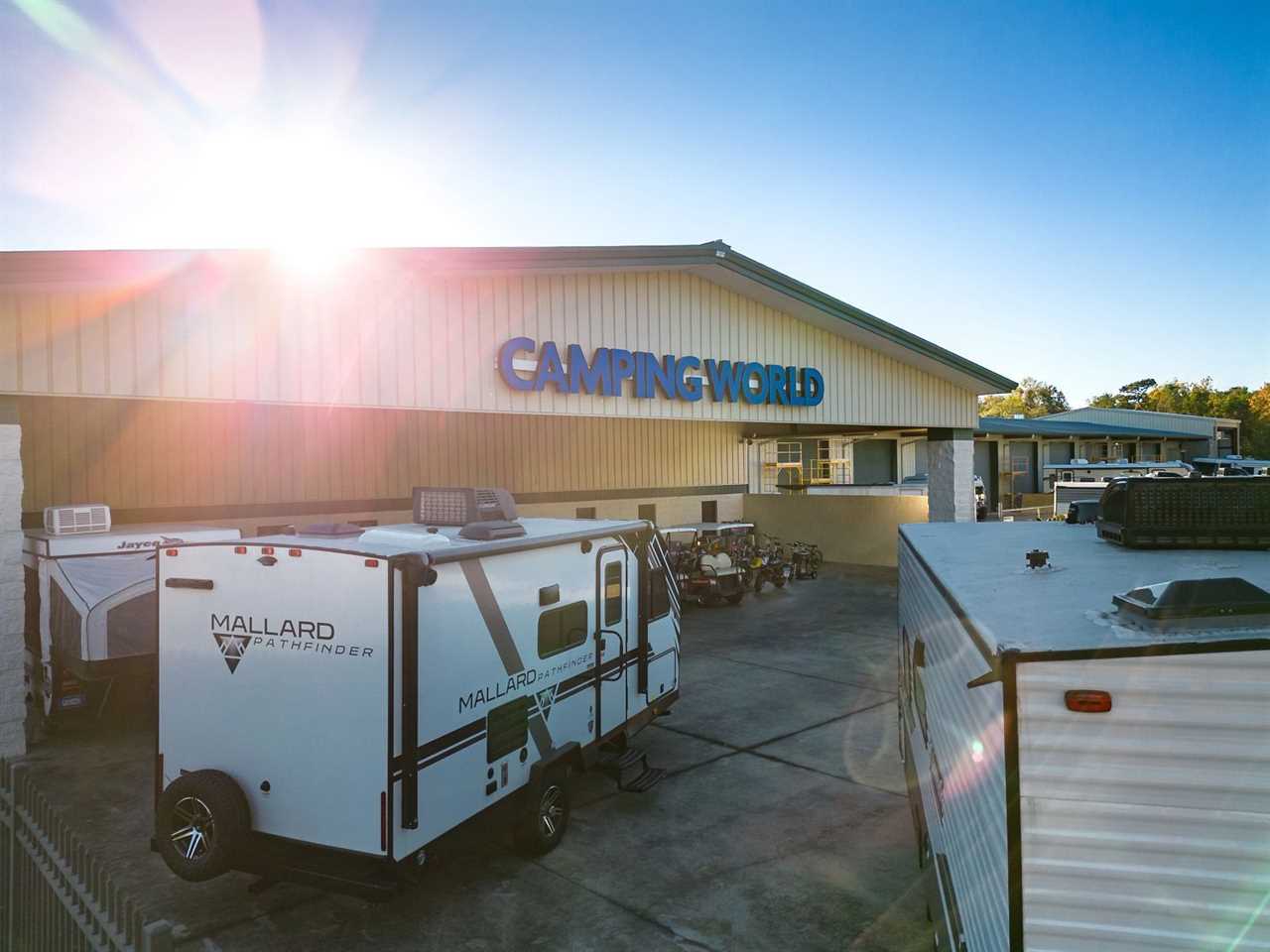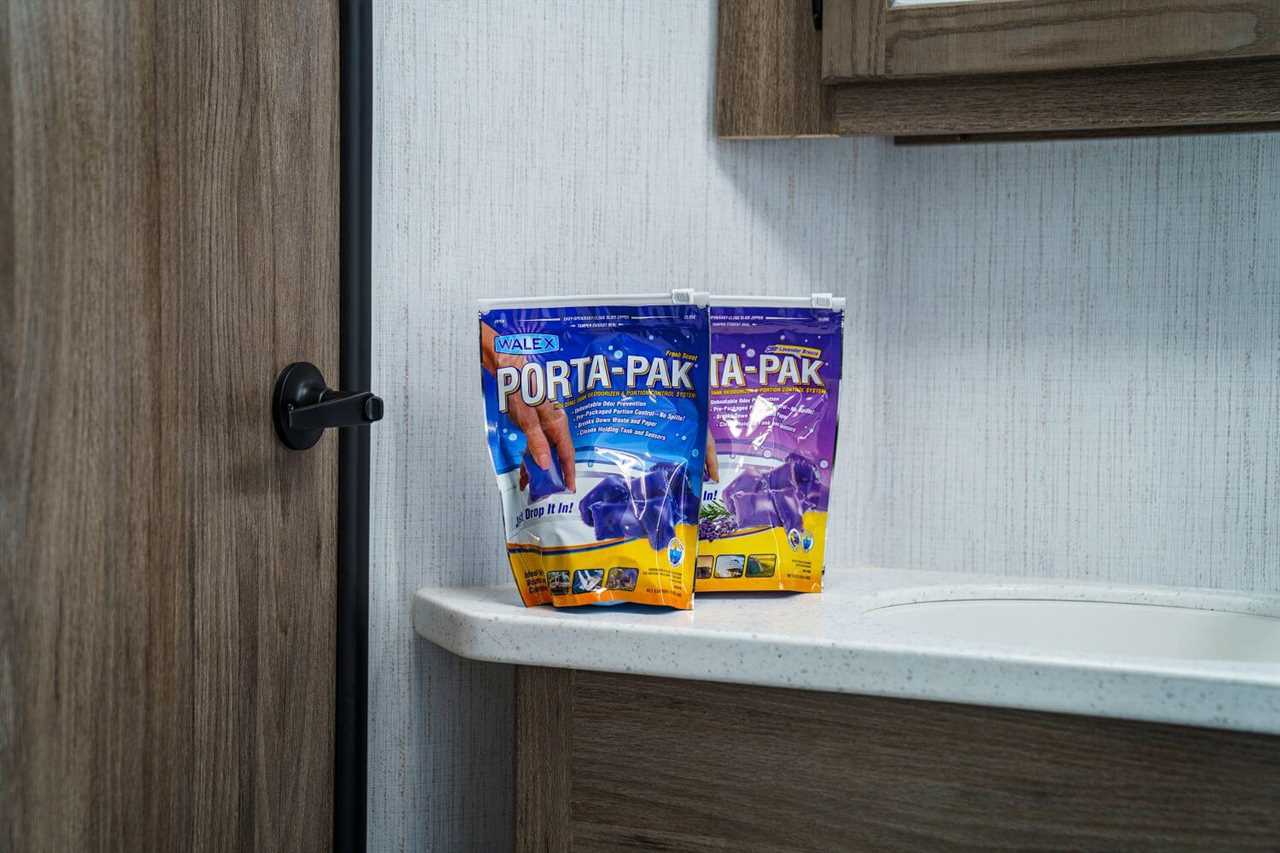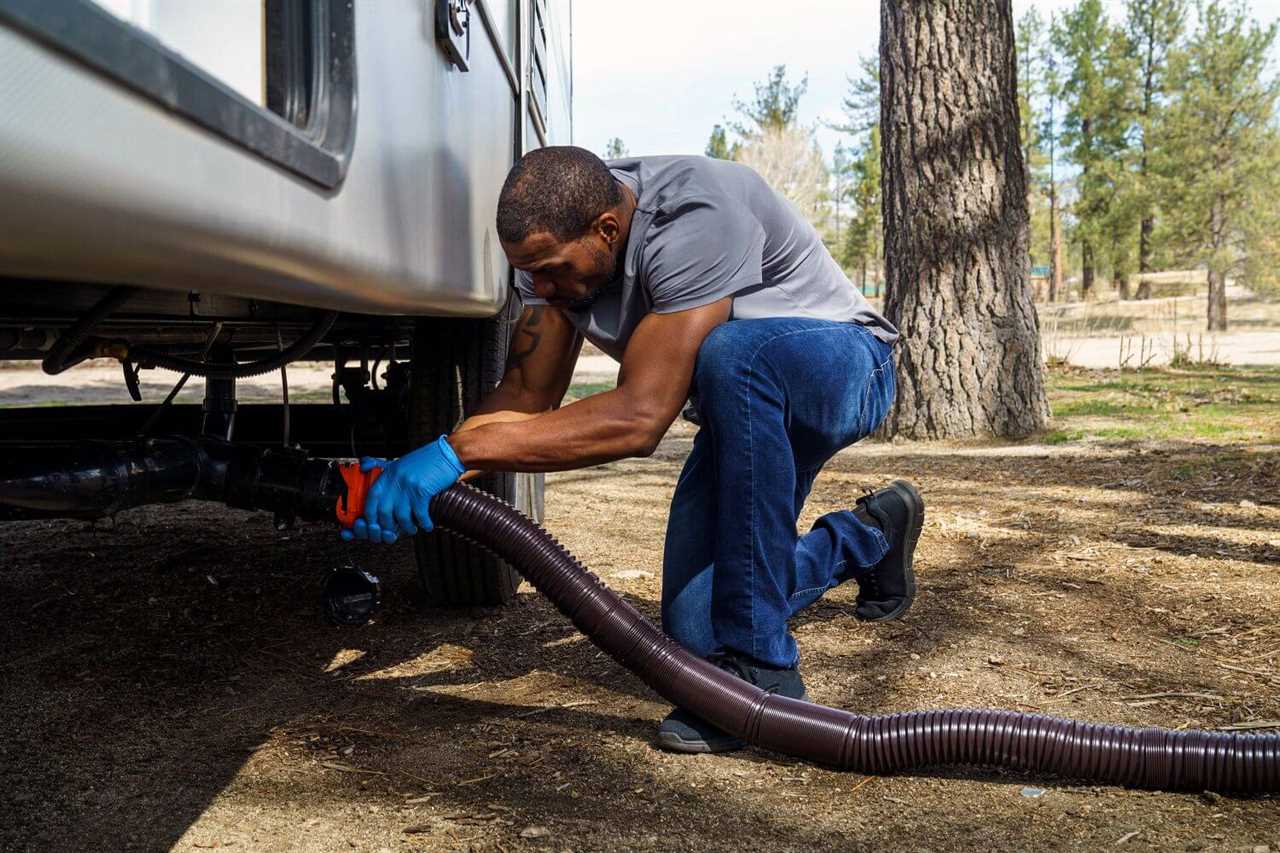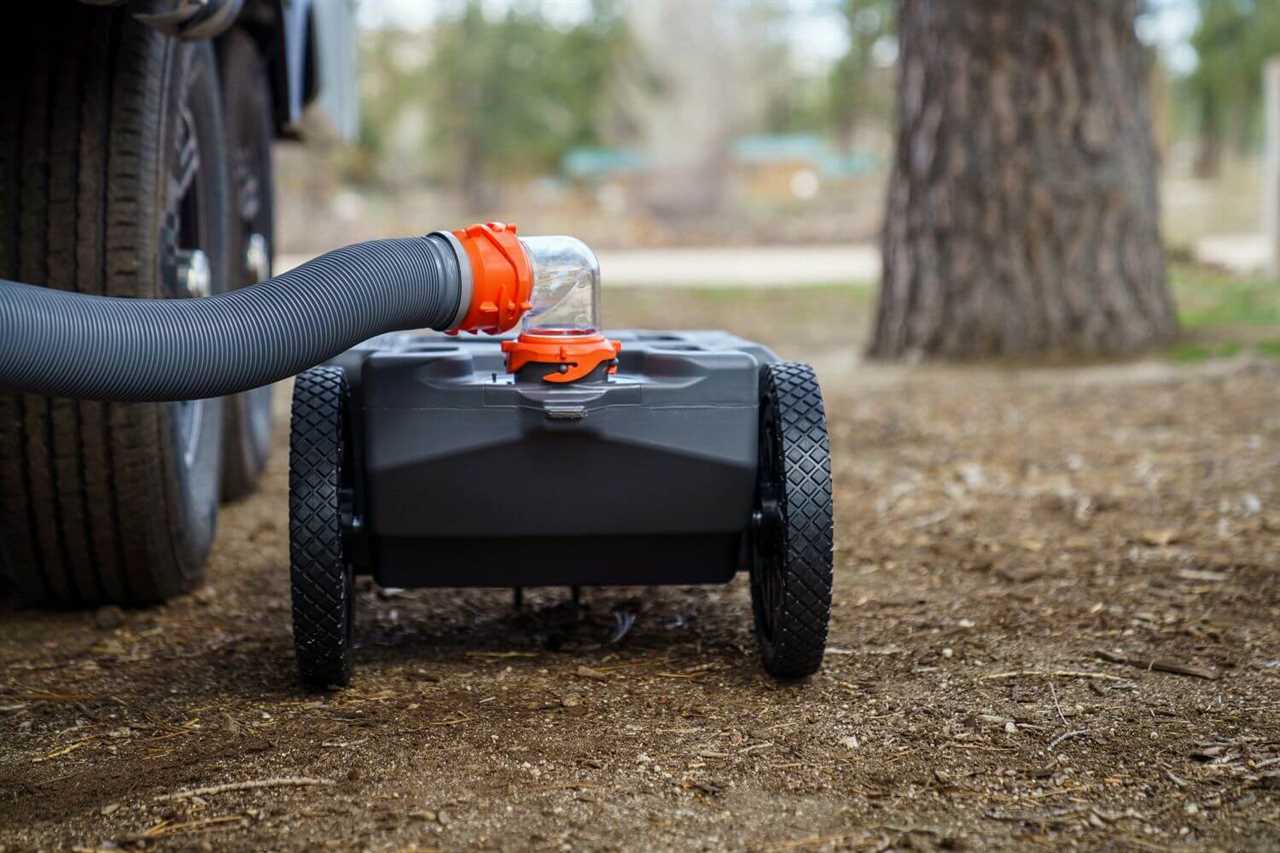Managing waste correctly is key to enjoyable RV experiences, and it’s also the courteous thing to do for your campground neighbors. Without properly maintained RV holding tanks, things get ugly, smelly, and downright unsanitary in a hurry.
There’s much to learn about RV holding tank maintenance if you’re new to RVing. Fortunately, the resources below will teach you everything you need to keep the holding tanks in your RV in tip-top condition.
Top 5 RV Holding Tank Maintenance Tips
- Don’t flush anything besides waste and RV-friendly toilet paper.
- Empty your tanks properly (black, then grey) when they reach two-thirds capacity.
- Use enzyme-digesting tank treatments regularly (every 5-10 dumps for full-timers; after each trip for part-timers).
- Sanitize your fresh water holding tank annually (in the spring when de-winterizing your RV).
- Deep clean grey and black holding tanks annually (using RV sewer chemicals and your black tank flush, if applicable)
How to Find RV Dump Stations

Photo by Camping World
Knowing how to empty your tanks only helps if you know where to dump them. RV parks and resorts with full hookups make things easy, but learning about all the places to dump your RV waste gives you choices when you’re on the road.
Here are five options:
- RV service centers
- Rest stops
- Travel centers
- Campgrounds (even if you’re not staying overnight)
- City wastewater treatment plants
What You Need to Maintain RV Holding Tanks
Click to view slideshow.
Shop Camping World’s complete selection of RV maintenance accessories.
How to Empty RV Holding Tanks
Dumping your tanks properly is key to maintaining them, but it’ll also help you avoid nasty messes. Here are the basic steps:
- Find the sewer dump site. Prepare by putting on your personal protective equipment (PPE).
- There should be a water spigot near the dump site, and some even have a rinse hose. If not, have a rinse hose available and connect it to the spigot (do not use the same potable water hose you use to source drinking water). This hose will be used for clean up. Set aside for now.
- Retrieve your sewer hose. Connect it to your RV and to the sewer dump site. Double-check the fittings and the hose for loose connections or cracks. If everything looks secure, set up a sewer hose support for gravity assistance, which helps to clear the hose more completely.
- Identify the black water and grey water handles. Pull the black tank handle to dump black water first. Pull the grey handle to empty the grey water second. Do not pull both at the same time.
- After both tanks have emptied (watch for this through the clear or opaque hose elbow), it’s time to use your black tank flush if you have one (more on this below).
- After flushing, close both tank valves. Disconnect your sewer hose and rinse it using the dump station’s water source.
- Pack up and wash up.
Read the full breakdown here.
How to Use an RV Black Tank Flush
This option only applies to motorhomes and trailers equipped with a black tank flush. If you have one, use it regularly to avoid clogs and impeded tank sensors. You’ll need your sewer hose connected to a hookup before running water through your black tank flush.
From there, here are the basic steps:
- Empty holding tanks and locate the black tank flush inlet.
- Connect a water hose to the inlet and open your black tank valve handle.
- Run water through the tank until water from the sewer hose is clear.
- Turn off the water and disconnect the water hose.
- Empty the sewer hose, disconnect it, and store it safely and securely.
Learn the important nuances of each step and how frequently to use your RV’s black tank flush.
How to Sanitize Your RV Fresh Water Tank

Photo by Camping World
Sanitizing your RV’s fresh water tank should be part of your annual RV maintenance routine. Even if you use an RV water filter to keep most contaminants out of your tank, full sanitization is the only way to ensure your drinking water is safe on your next RV trip.
This process is best done with access to sewer hookups and a freshwater source. You can use bleach or environmentally-friendly solutions. With either, you’ll need the correct ratio of water-to-cleaning solution to avoid damaging your RV’s fresh water tank and water lines.
Learn how to sanitize your tank with bleach or environmentally-friendly sanitizing solutions.
How to Treat Your Black Water Tank Right

Photo by Camping World
Adding sewer chemicals to your black tank is easy, but it must be done regularly to maintain your RV’s holding tanks. Remember, this should be done every 5-10 dumps for full-timers and after each trip for weekend warriors.
When you’re ready to add a tank treatment, here are the basic steps:
- Attach a sewer hose to a sewer hookup and drain your black tank (using the steps above).
- Flush the system (using a black tank flush or running water down your RV toilet).
- Close the black tank valve handle.
- Add water to the tank (check the recommendation from the sewer chemical manufacturer on the amount).
- Add enzyme-digesting tank treatment and let it sit for the manufacturer’s recommended time period.
- Drain the black tank again and rinse to remove any remaining particles.
Learn everything you need to know to treat your black water tank right.
How to Unclog an RV Black Tank

Photo by Camping World
It’s not difficult to avoid clogging an RV black tank if you follow the above recommendations, but resolving clogs if they do occur is also important. We hope you never have to, but these tips will help you unclog an RV black tank.
- Identify the cause of the clog. Is it due to improper toilet paper? Are you not flushing with enough water? Did you forget to empty your tanks before winterizing your RV?
- Acquire RV sewer chemicals. Read the directions to understand how long these treatments should be administered to resolve clogs.
- Acquire a flexible tank wand. This may not be needed if chemicals do the trick, but it’s the equivalent of snaking a residential toilet.
- Know the recommendations for unclogging different clogs. Learn how to unclog an RV black tank properly.
What is an RV Portable Waste Tank, and Do You Need One?

Photo by Camping World
Long-term campers often use RV tote tanks in locations without full hookups. A portable RV waste tank allows you to empty your holding tanks into a portable container and roll it to the campground’s dump station without moving your RV.
They’re most popular among RVers who prefer state parks or boondocking spots over luxury resorts with full amenities. And for that type of camping, they assist in maintaining your holding tanks instead of allowing waste to accumulate and sit for extended periods.
Learn more about RV portable waste tanks and why you might need one.
Regular tank maintenance becomes a simple part of the RV lifestyle for experienced travelers. But if you ever have a tank issue you don’t feel comfortable resolving, contact your nearest Camping World Service Center for assistance.
Do you have any questions or comments about maintaining RV holding tanks? Share your thoughts in the comments below!
By: Camping World
Title: How To Maintain RV Holding Tanks
Sourced From: blog.campingworld.com/rv-basics/maintain-rvs-holding-tanks/
Published Date: Thu, 15 Dec 2022 20:00:04 +0000
---------------------------------------------
 CampingSurvivalistHuntingFishingExploringHikingPrivacy PolicyTerms And Conditions
CampingSurvivalistHuntingFishingExploringHikingPrivacy PolicyTerms And Conditions
